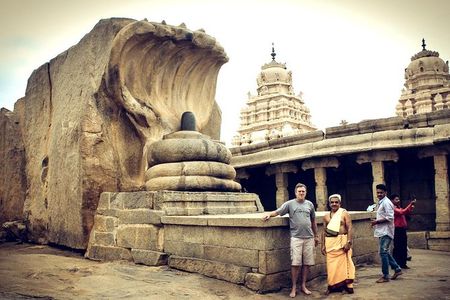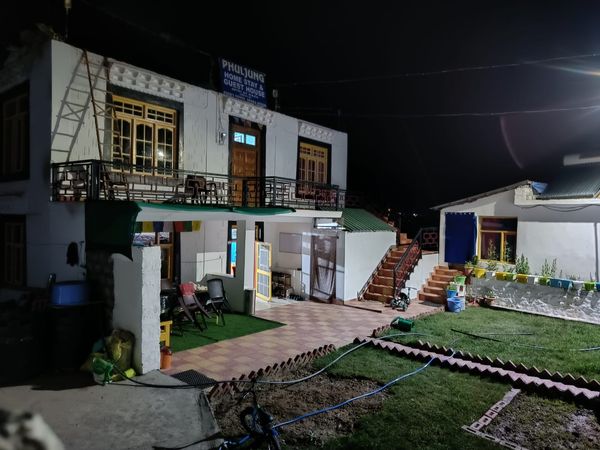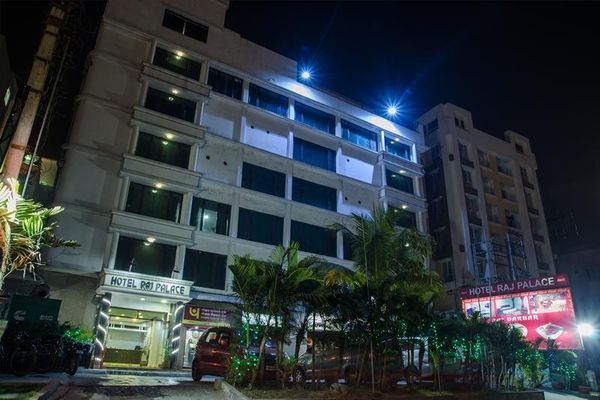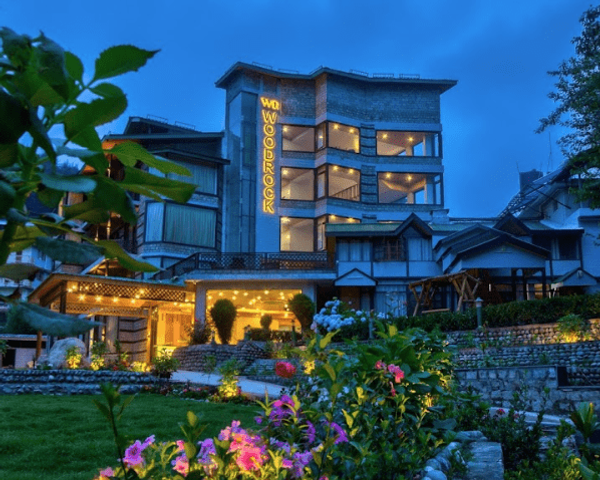Lepakshi: A Timeless Journey Through Art, Architecture, and Heritage
 Rohit Sen
28 Oct, 2024
10 mins read
69
Rohit Sen
28 Oct, 2024
10 mins read
69

Lepakshi, a small yet historically rich village in the Anantapur district of Andhra Pradesh, India, is a treasure trove of ancient architecture, art, and folklore. Nestled about 120 kilometers from Bangalore, this destination attracts travelers, art enthusiasts, and history buffs alike. With its heritage temples, intricate carvings, and legends dating back to the Ramayana, a trip to Lepakshi is a blend of cultural exploration and awe-inspiring artistry.
A Glimpse into Lepakshi’s History
The story of Lepakshi is as captivating as its architectural marvels. The village’s name, Lepakshi, meaning "rise bird" in Telugu, stems from the tale of the great mythical bird Jatayu from the Ramayana. According to folklore, when Ravana abducted Sita, Jatayu attempted to rescue her, battling the demon king before succumbing to his injuries near this village. As the story goes, Lord Rama later discovered the wounded Jatayu and, moved by his sacrifice, commanded him to "rise," hence the name "Lepakshi."
Main Attractions of Lepakshi
- Veerabhadra Temple
- The Veerabhadra Temple stands as the centerpiece of Lepakshi. Constructed in the 16th century under the Vijayanagara Empire, the temple is dedicated to Veerabhadra, a fierce form of Lord Shiva. The temple complex is renowned for its Dravidian architecture, vibrant frescoes, and detailed sculptures. Built on a low rocky hill called Kurmasaila, which means "tortoise hill," the temple houses intricate carvings that depict various gods, goddesses, and mythological tales.
- A highlight within the temple is the Natya Mandapa, or dance hall, featuring pillars adorned with carvings of celestial dancers and musicians. Each pillar tells a story, showcasing the skills and artistic genius of the Vijayanagara artisans.
- The Hanging Pillar
- Perhaps one of the most fascinating aspects of the Veerabhadra Temple is its "hanging pillar." Among the temple's 70 pillars, one mysteriously hangs from the ceiling without any support from the ground. Visitors often test this phenomenon by passing a cloth underneath it, marveling at the architectural ingenuity that defies gravity. Local lore suggests that this design element symbolizes the architects' advanced understanding of weight distribution and balance.
- Nandi Bull Statue
- Situated about 200 meters from the main temple, the colossal Nandi bull statue in Lepakshi is one of the largest monolithic Nandi statues in India, measuring approximately 15 feet in height and 27 feet in length. Carved from a single granite stone, this statue captures attention with its intricate detailing on the ornaments and expressions. Nandi, the vahana (vehicle) of Lord Shiva, is an iconic figure in Hindu culture and holds great religious significance.
- The Murals and Frescoes
- Inside the temple, visitors encounter some of the most elaborate frescoes from the Vijayanagara period. Painted with natural pigments, these murals showcase scenes from Hindu epics, including the Ramayana and Mahabharata. Depictions of gods, mythological creatures, and battles adorn the ceilings and walls, adding color and life to the stone structure. These frescoes are a window into the techniques of the era and reveal the artisans' dedication to preserving Hindu mythology in vivid, enduring colors.
- Nagalinga
- Another notable feature is the Nagalinga sculpture. This unique monolithic stone carving depicts a large serpent, known as a "naga," wrapped protectively around a Shiva lingam. The sculpture, positioned in the temple’s courtyard, is a striking example of the artisans' skill in rendering serpentine forms in stone.
Planning Your Lepakshi Trip
A day trip from Bangalore is a convenient way to explore Lepakshi, but spending a full day here allows for an immersive experience.
- Travel Route: Lepakshi is easily accessible by road from Bangalore. Most travelers prefer to drive or hire a cab, with the journey taking approximately 2.5 hours. Public buses also operate between Bangalore and Lepakshi, though they may take slightly longer.
- Best Time to Visit: The ideal months to visit are from October to March when the weather is pleasant and conducive to outdoor exploration. Summer months can be extremely hot, which may limit the time you spend appreciating the intricate details in the temple complex.
- Entry and Timings: Entry to the Veerabhadra Temple is free, and it’s typically open to visitors from 6 AM to 6 PM. Early mornings and late afternoons are the best times for photography, as the soft sunlight accentuates the carvings.
- Local Cuisine: After exploring, travelers can enjoy traditional Andhra cuisine in nearby eateries or Hindupur, the nearest town. Spicy biryanis, tangy chutneys, and regional sweets like pootharekulu are popular options.
Tips for an Enriching Experience
- Hire a Guide
- Hiring a local guide is highly recommended to uncover the rich stories behind each sculpture and architectural feature. Guides bring history to life by narrating the legends and sharing insights into the artistry of the Vijayanagara period.
- Photography
- While photography is allowed, it’s essential to respect the sanctity of this religious site. Additionally, capturing the frescoes can be challenging due to the dim lighting within the temple, so a camera with a good low-light capability is beneficial.
- Respect the Heritage
- Lepakshi is a protected heritage site, and visitors are urged to preserve its pristine condition. Avoid touching or leaning on the pillars and sculptures, as constant handling can damage these delicate carvings over time.
- Dress Appropriately
- As Lepakshi is a religious site, visitors should dress conservatively. Light, breathable clothing is advisable, especially if you’re visiting during the warmer months.
Beyond Lepakshi: Nearby Attractions
For those looking to extend their trip, there are several interesting places nearby:
- Penukonda Fort: Located approximately 40 kilometers from Lepakshi, Penukonda Fort is another marvel from the Vijayanagara period, showcasing ruins and architectural brilliance. The fort is significant for its historical association with the Vijayanagara rulers.
- Gorantla Temple: About 25 kilometers from Lepakshi, Gorantla Temple, dedicated to Lord Chennakesava, is another lesser-known gem. This temple, too, boasts intricate carvings and is a testament to the region's architectural heritage.
Conclusion
A trip to Lepakshi offers a unique experience, merging historical intrigue with spiritual reverence. The village’s quiet charm, coupled with its magnificent temples and artistic legacy, makes it a must-visit destination for anyone interested in India’s cultural heritage. With its compelling tales and awe-inspiring artistry, Lepakshi stands as a timeless testament to the craftsmanship and devotion of the Vijayanagara Empire, inviting visitors to step back in time and experience the grandeur of a bygone era.
Written By:
Rohit Sen



Hotels at your convenience
Now choose your stay according to your preference. From finding a place for your dream destination or a mere weekend getaway to business accommodations or brief stay, we have got you covered. Explore hotels as per your mood.





